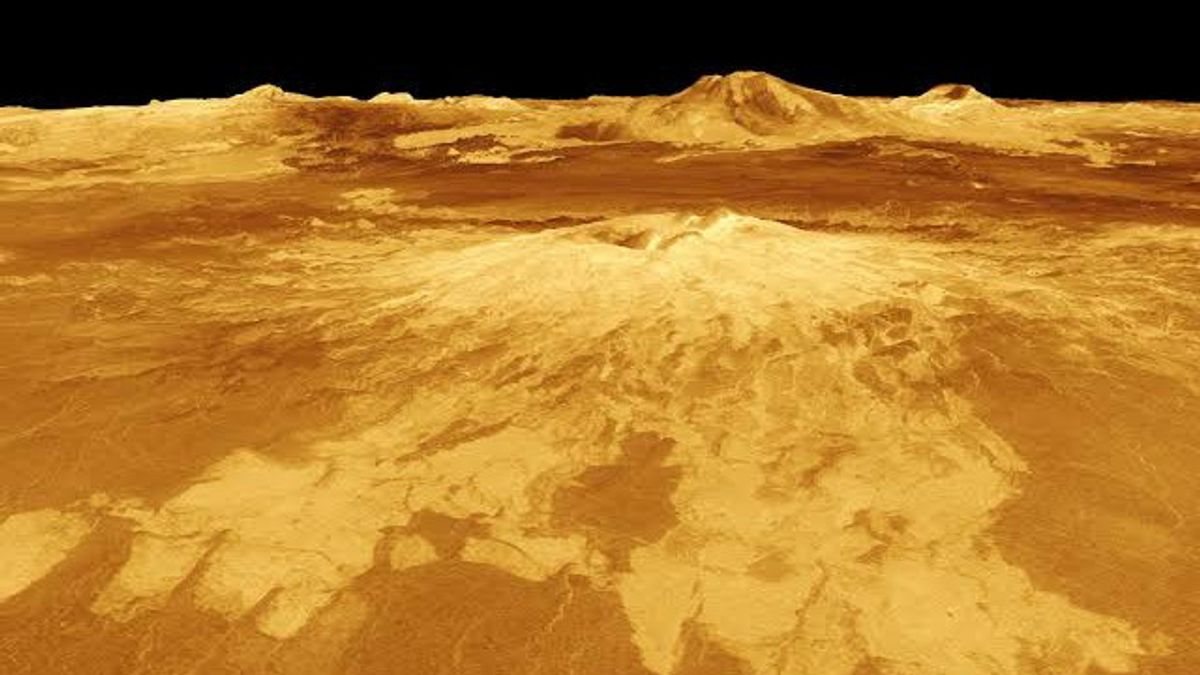JAKARTA - Apart from Mars, Venus is also said to be similar to Earth because of its size and composition. However, the weather conditions are quite different, which means that landers or rovers cannot survive there for long.
Now, NASA is planning a new mission to Venus that will last a little longer. The Long-Live In situ Solar System Explorer (LLISSE) is a small but mighty Venus lander that will study the planet for several months.
The challenge, NASA is required to build batteries that work for months in Venus-like conditions that can melt lead solder, boil the electrolyte in the battery cells, and the equivalent of being one kilometer underwater.
Armed with this powerful battery, it can power LLISSE in one of the most extreme environments in the Solar System.
On the surface of Venus, temperatures reach around 465 degrees Celsius, which can melt lead in electrical circuits and cook standard batteries. Venus' atmosphere is also reactive and can quickly affect many materials such as the copper used to build traditional spacecraft.
These extreme environmental conditions have limited the lifespan of all Venus landers to about two hours or less, which makes data collection impossible for extended periods of time.
NASA and Advanced Thermal Batteries, Inc. (ATB) have taken up this challenge for a long-lived lander on the Venusian surface. As a result, the first battery can operate at Venusian temperatures for one Venusian solar day (120 Earth days equivalent).
This new technology employs a unique chemical and robust design that takes advantage of approaches often used to drive smart missiles.
That battery system is still under development, but results so far suggest batteries capable of operating in harsh environments like Venus' could soon become a reality and could provide a new energy storage device for future exploration of Venus.
In addition, ATB undertook significant battery research and development, including a long-life, low-rate self-discharge molten salt battery for the LLISSE Venus lander.
The goal is to develop a battery that can last for 60 days of continuous discharge operation to support bus operations at +25V and -25V under harsh conditions on the Venusian surface.
Thermal batteries use a high-temperature electrolyte which is solid and inert at standard room temperature. On Venus, the thermal battery can take advantage of the ambient atmospheric conditions to heat the electrolyte and can continue to operate without the need for thermal insulation.
The electrochemistry of existing thermal batteries involves a very high degree of self-discharge (internal chemical reactions that consume battery life). Battery chemistry and architectural modifications are necessary to develop long-lived batteries for the surface of Venus.
ATB's battery development work to date has focused on lithium alloy anodes, metal sulfide cathodes, and alkaline halide molten salt electrolytes, and the team has been successful in reducing internal battery reactions that self-regulate and reduce battery life and capacity.
ATB has developed a battery that meets the targeted voltage range and has been operational for 118 days, almost twice the required life. The battery contains 17 individual cells in series and is chemically and structurally engineered specifically to meet the requirements of the LLISSE mission.
Now that core battery capabilities have been demonstrated, work is underway at ATB planned to optimize the rugged design to withstand shock and vibration loads.
Additional efforts will focus on the pressure vessel housing and packaging aspects of the final battery. A full prototype of the Venus battery system is expected to be demonstrated in the next 18 months.
"The recent demonstration of battery technology, with its improved architecture and low self-discharge electrochemistry, is a major achievement that many might not have thought of," said Project ATB engineer, Dr. Kevin Wepasnick, quoted from NASA's website, Wednesday, March 1st.
The battery technology, like other technologies under development for the long-lived Venus surface lander, has a variety of other science applications including missions to explore Mercury or descend into the gas giant's atmosphere.
In addition, this technology can provide power where traditional systems cannot operate, such as high-temperature jet engines or harsh industrial environments.
For information, Earth's twin planet holds important scientific clues about the Solar System, planets around other stars, and our home planet. No doubt, Venus becomes quite interesting to be studied further.
The English, Chinese, Japanese, Arabic, and French versions are automatically generated by the AI. So there may still be inaccuracies in translating, please always see Indonesian as our main language. (system supported by DigitalSiber.id)













